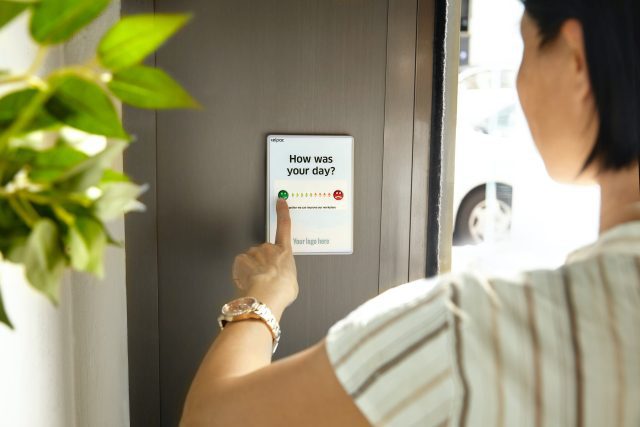
Have you ever thought about how much you know your customers? Sure, from time to time, you may recognize one of them on the street, but you don’t really know who they are. And if you have multiple locations, how could you tell every person who shops in your place? Luckily, if you know how to use data to understand your customers, you don’t have to. Technology can do it for you.
And in this day and age, if you want your business to grow, digital is the only way to go. It’ll give you the edge over competitors and allow you to optimize your sales process to close more deals. You’ll learn what your customers want, so you can find a way to offer it.
All in all, if you use the data in the right way, you’ll grow your revenue. But what is the right way to use data? What should you do with it? Well, let’s talk about that.

It’s easy to increase revenue if you use data to understand your customers.
1. Identify And Reward Your Best Customers
Your business relies on your most loyal customers. As a matter of fact, most of your revenue comes from the fifth of your total customer count. So, that’s 20% of your customers, making about 80% of your income. Let that sink in for a moment.
Of course, you want to find out who these people are and learn more about them. They’re your VIP customers, and you need them. Hence, you need to dive into your data and list your customers by:
- Average check size
- Visit frequency
- Lifetime value
It shouldn’t take you long to figure out who your best customers are. However, once you know that, you must use that info. Offer them discounts and deals you think they might like and show them you care. If you can make them stay, you’ll increase your profits by 25% to 95%.
Naturally, the more someone spends, the better deal you should offer them. Make your VIP customers feel special, and they’ll spend even more than they did until now, even with the discounts.
2. Group Your Customers Based On What They Like
Your VIP customers are important, but they’re still just a piece of a puzzle. The rest of your customers (the majority) likely can be divided into smaller niche groups. And data lets you do that. You can use it to see what the current trends are, the buying habits of your customers, and even how they find out about you.
Now, you need plenty of customer information to create such a report. Ideally, you’ll take all your data into a CRM database to get a clear overview. If you know how to manage your database with ease, you’ll see that specific customers buy certain things. So, it won’t be hard to divide them into smaller groups.
When you know what they like or need, you can offer them personalized promotions. Propose a deal that sounds good, and they’ll be happy to take it. As a result, you’ll improve your relationship and encourage them to buy something new.

Offer your customers personalized incentives, depending on what they like.
3. Win Back Customers Who Are About to Leave
If you’re in the business for a long time, you know that customers come and go. According to Statista, you can expect to lose between 11% and 25% of your customers each year, depending on what you do.
Of course, clients leave for all kinds of reasons. But if you use data to understand your customers, you can identify that they’re about to take off and go out of your way to make them stay. Hence, you can reduce your churn rate with data.
If you rely on customers coming in regularly, you can set up a system that offers them a promotion every time they’re absent for a long time. It’s all automatic, and you don’t even have to do anything. The data works for you here, and it can cut your number of leaving customers in half.
4. Get Feedback From Your Customers in Real-Time
Remember that it isn’t all about how much data you have, but rather about how good it is. So, you’ll want to look past the numbers and into customer feedback. As we know, talking to your current clients is one of the best ways to identify your target audience, and it’s the same with data. The more you listen, the higher-quality your data will be.
However, you’ll need to take it a step further for this tactic to work. A quick survey once in a while isn’t going to cut it here. Instead, you need to ask for feedback regularly and use the info to make things better. On the other hand, you can’t annoy your customers with endless forms every week, so how should you go about it?
The simplest way to do it is to create a one-question survey that will get delivered to your customers when they buy something from you. And the question is: How likely are you to refer us to a friend? If the answer is negative, it’s clear that they’re not happy with you.
With the right tools, you can review the negative feedback and personally reach the customers to try and make things right. Using feedback this way is using data effectively in a nutshell. It helps you to notice the problem and fix it right away.

It’s always a good time to get some honest customer feedback.
5. Figure Out Your Customer’s Path
The customer’s journey is always dynamic and often long. To understand it, you’ll have to put yourself in their shoes. And you can do that through a method called customer journey mapping. Think about how your customers interact with your brand before, during, and after purchasing. These are your critical touch points, and you need to get them right.
Once you map out all the interactions, you need to determine which ones fail. For example, maybe your Facebook Ads don’t bring as many customers as you’d like, or perhaps people aren’t crazy about the app they need to use to use your services. On top of that, customer expectations and wants are constantly changing, and you have to consider those shifts as well.
If you use data to understand your customers better, you’ll be able to fix the issues as soon as they come up. They won’t be around long enough to make a dent in your revenue, and you’ll only have data to thank for it.
About Author:-
Daryl Cleveland is a digital marketer and writer working with MoversTech CRM. He loves helping smaller companies make their move to the digital world, and he’s passionate about it. When he isn’t working, he spends his time with his wife and daughter.
